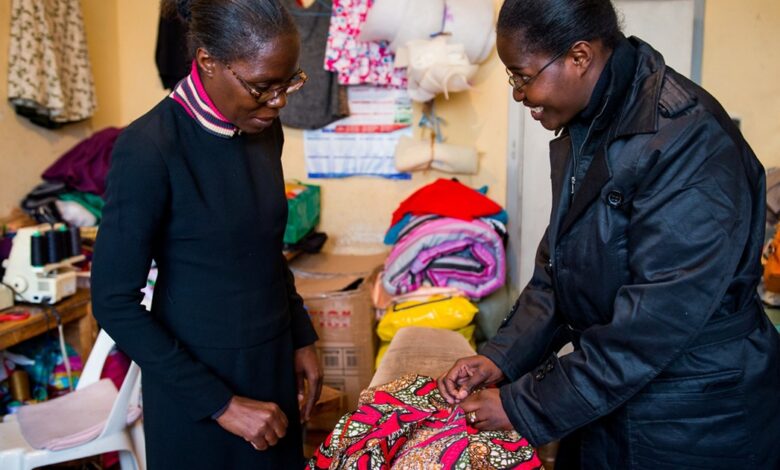How to support entrepreneurship in low- and middle-income countries

More than half of the global workforce is self-employed. Recognizing the need to support these workers, policymakers and development institutions spend over $1 billion annually on training existing and potential microentrepreneurs.
But despite the money spent, many business owners grapple with persistent challenges, such as low productivity, low profits, and low earnings.
Addressing these challenges prompts questions such as: What program design best supports entrepreneurs? How can we reach all microentrepreneurs, including women and subsistence entrepreneurs? And how can entrepreneurs acquire the skills to run a successful business and tap into new markets or high return sectors?
The World Bank and the Jobs and Opportunities Initiative (JOI) at J-PAL help answer these types of questions by supporting studies at the frontier of entrepreneurship and job creation research. Here’s what we’re learning from our research and growing evidence on interventions to support microentrepreneurs in lower-middle-income countries.
Programs that provide entrepreneurs with market access, access to finance, or business training show mixed results
Helping firms access new markets can improve firm performance. Some examples include improving firms’ ability to sell to foreign markets or multinational corporations; strengthening both physical and digital infrastructure; and eliminating information barriers. However, while these interventions can be promising for larger firms, there is limited evidence on how market access impacts microenterprise growth.
At the same time, a series of randomized evaluations indicate that cash grants, microfinance, and business training programs can positively affect firm outcomes such as profits and growth, although the impacts are not consistently transformative on average
The variation in intervention impacts may stem from design and implementation differences
For instance, while traditional microfinance has had limited impact on business growth, more promising approaches have involved making changes to financial products, such as allowing more flexibility and grace periods in paying back loans, as well as leveraging asset-based micro equity approaches. Soft skills-focused training programs have also shown greater impact than traditional classroom-based business trainings typically focused on hard skills.
Entrepreneur capacity may also influence outcomes. For instance, a J-PAL study in Hyderabad, India found that only entrepreneurs with prior experience running a business achieved higher profits following access to microfinance. Targeting this subset of entrepreneurs with higher growth capacity appears promising for increasing the impact of entrepreneur support programs, as suggested by various randomized evaluations.
Policymakers face a trade-off between allocating resources to high potential entrepreneurs vs. promoting inclusivity
On the one hand, policymakers can choose to allocate resources to support entrepreneurs with high capacity, but this approach can threaten to leave behind or even disadvantage subsistence entrepreneurs. Alternatively, policymakers can prioritize inclusivity by broadening their support to all types of entrepreneurs. This more inclusive approach, however, could lead to an inefficient allocation of resources at the market level, holding back potentially impactful firms. Ultimately, policymakers should choose an approach based on their goals or leverage a variety of instruments for different purposes.
Policymakers should consider the context and implementation of entrepreneur support programs
The results of one randomized evaluation cannot serve as a comprehensive model to inform programming in different cultural or social contexts. Optimizing the effectiveness of support programs requires context-specific considerations. For example, cultural and social norms may reduce the effectiveness of cash grants or microfinance for women entrepreneurs in specific regions, as women in some regions may share funds with other household members. In such cases, ensuring digital disbursement of capital into accounts privately held by women could guarantee that resources are directed toward their businesses. In other cases, the quality of the implementing partner or trainers can make a meaningful difference in a program’s impacts.
Future questions for research on entrepreneur support programs
We still need to better understand: What are the best options to identify high-potential entrepreneurs in a predictive and scalable manner? How can microfinance and business training programs better meet the needs of microentrepreneurs? What alternative training programs work best to encourage better business performance, and why? What are key local constraints preventing microentrepreneurs from unlocking demand and growth?
Learn more about finding answers to these open questions in the World Bank and the Jobs and Opportunities Initiative (JOI) at J-PAL, as we work toward enabling policymakers to better support microentrepreneurs globally.
This blog is based on the February 2024 edition of the Knowledge4Jobs newsletter, curated by the World Bank’s Jobs Group and Labor and Skills Global Solutions Group. Click here to sign up for the Knowledge4Jobs newsletter.



